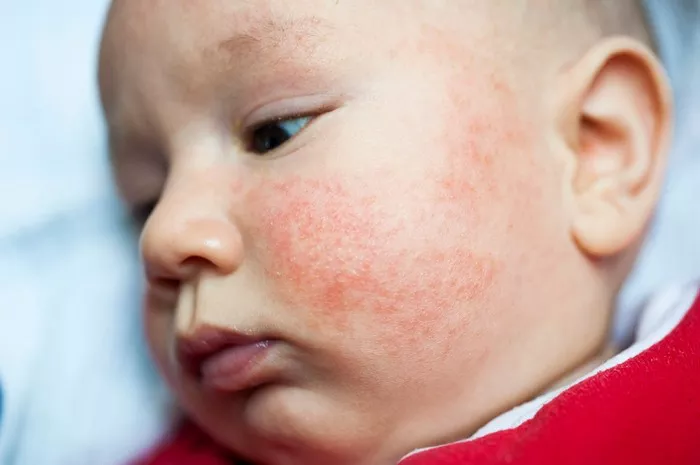Hidradenitis Suppurativa (HS) is a chronic skin condition characterized by painful, inflamed lesions that typically develop in areas where skin rubs together, such as the armpits, groin, buttocks, and under the breasts. These abscesses and nodules can cause significant discomfort, affect quality of life, and lead to scarring. One of the pressing questions for individuals diagnosed with HS is whether the condition inevitably worsens over time. This article explores the progression of HS, factors influencing its severity, treatment options, and lifestyle strategies to manage the condition effectively.
Understanding Hidradenitis Suppurativa
Hidradenitis Suppurativa is a condition that affects the hair follicles and sweat glands. It often begins after puberty and is more common in women, although it can affect individuals of any age or gender. The exact cause of HS is not fully understood, but it is believed to involve inflammation of the hair follicles, which can lead to obstruction, rupture, and subsequent infection.
Factors Influencing HS Progression
The progression of Hidradenitis Suppurativa can vary widely among individuals. While some may experience mild symptoms that remain stable over time, others may see a progressive worsening of their condition. Several factors contribute to the variability in HS progression:
1. Severity at Diagnosis: The initial severity of HS can influence how the condition progresses. Those with more extensive or severe lesions at the time of diagnosis may be more likely to experience worsening symptoms.
2. Early Intervention: Prompt diagnosis and treatment can help manage symptoms and prevent complications. Delayed or inadequate treatment may allow the condition to progress more rapidly.
3. Individual Health Factors: Factors such as obesity, smoking, hormonal changes, and genetics can influence the severity and progression of HS. Managing these factors through lifestyle changes and medical interventions can impact disease outcomes.
4. Treatment Response: The effectiveness of treatment in controlling symptoms and preventing flare-ups is crucial. Some individuals may respond well to therapies, while others may experience limited benefit or require more aggressive management.
SEE ALSO: What Treatments Are Available for Hidradenitis Suppurativa
Clinical Course of Hidradenitis Suppurativa
Hidradenitis Suppurativa can follow a variable clinical course:
1. Mild Disease: Some individuals may have mild symptoms that remain stable or improve with appropriate management. These individuals may experience occasional flare-ups but generally have minimal impact on their daily lives.
2. Moderate Disease: Moderate cases of HS may involve recurrent abscesses and nodules that cause significant discomfort and scarring. These individuals may require ongoing treatment to manage symptoms and prevent progression.
3. Severe Disease: Severe HS is characterized by frequent and extensive lesions that may lead to chronic pain, drainage, and scarring. Severe cases can significantly impair quality of life and may require more aggressive treatment approaches, including surgery.
Treatment Options for Hidradenitis Suppurativa
Treatment for Hidradenitis Suppurativa aims to reduce symptoms, prevent complications, and improve quality of life. Options include:
1. Topical Treatments: Antibacterial washes and topical antibiotics can help reduce bacterial colonization and inflammation in mild cases.
2. Systemic Antibiotics: Oral antibiotics such as tetracyclines or clindamycin are commonly used to manage moderate to severe HS and prevent flare-ups.
3. Intralesional Injections: Corticosteroid injections into individual lesions can reduce inflammation and promote healing.
4. Biologic Therapies: Biologic medications, such as TNF-alpha inhibitors (e.g., adalimumab), target specific components of the immune system involved in inflammation and can be effective in severe cases.
5. Surgical Options: Surgical intervention may be necessary for draining abscesses, removing scar tissue, or excising persistent lesions. In severe cases, procedures such as wide excision or laser therapy may be considered.
6. Lifestyle Modifications: Managing risk factors such as obesity and smoking cessation can help reduce inflammation and improve treatment outcomes.
Managing Hidradenitis Suppurativa Effectively
Effective management of Hidradenitis Suppurativa involves a comprehensive approach that includes:
1. Regular Follow-Up: Monitoring disease progression and treatment response with healthcare providers.
2. Patient Education: Understanding triggers, symptoms, and treatment options empowers individuals to manage their condition effectively.
3. Healthy Lifestyle: Maintaining a healthy weight, practicing good hygiene, and avoiding tobacco can help reduce inflammation and improve overall health.
4. Support Networks: Connecting with support groups or counseling services can provide emotional support and practical tips for coping with HS.
Does Hidradenitis Suppurativa Always Get Worse?
The progression of Hidradenitis Suppurativa is highly variable and not always predictable. While some individuals may experience worsening symptoms over time, others may find that their condition stabilizes or improves with appropriate management. Early diagnosis, prompt treatment, and proactive management of contributing factors can help mitigate disease progression and improve outcomes.
Conclusion
Hidradenitis Suppurativa is a challenging condition that can have a significant impact on quality of life. Understanding the factors influencing disease progression and adopting a proactive approach to treatment and lifestyle management are essential for effectively managing HS. While the course of HS can vary among individuals, timely intervention and comprehensive care can help minimize symptoms, prevent complications, and improve overall well-being. Working closely with healthcare providers to tailor a treatment plan to individual needs is crucial in managing this chronic skin condition effectively.
Related Topics:

























